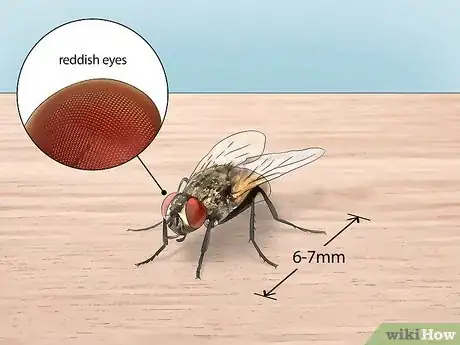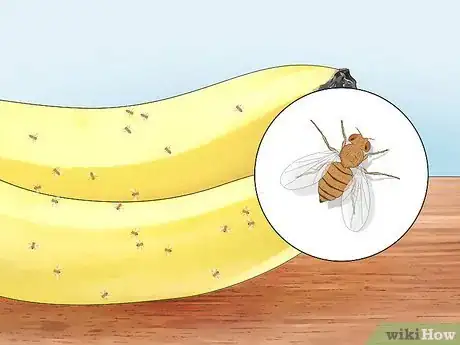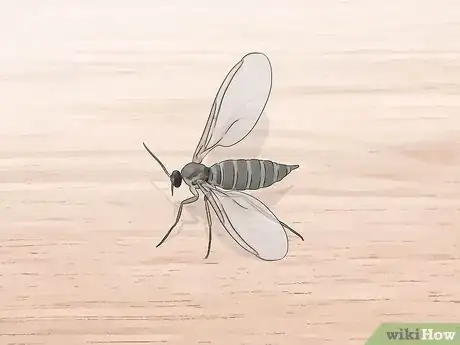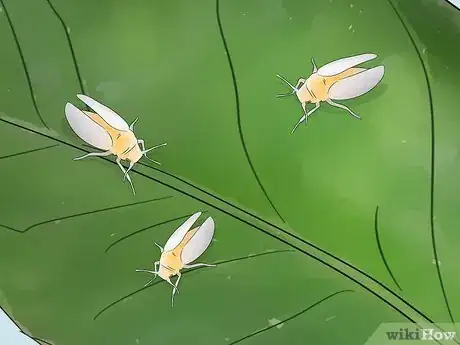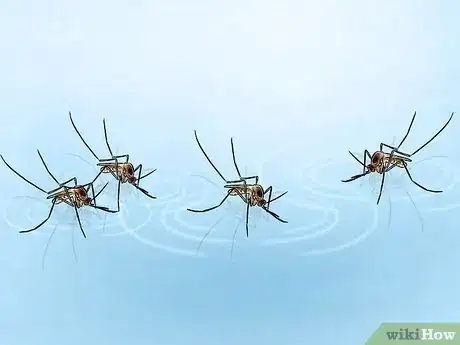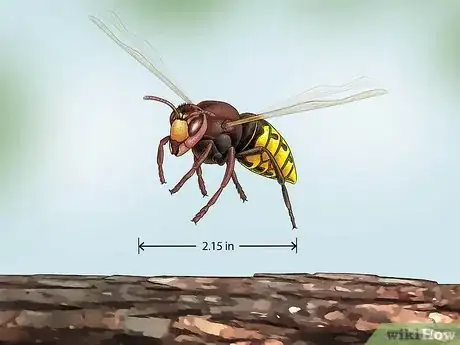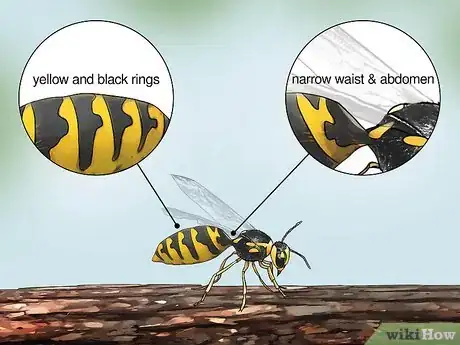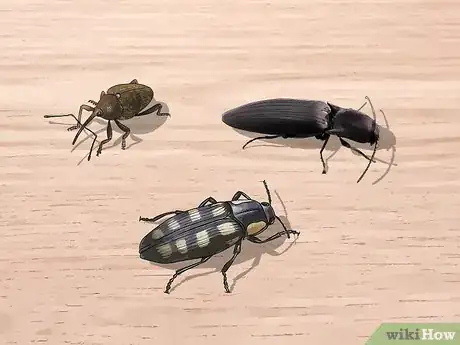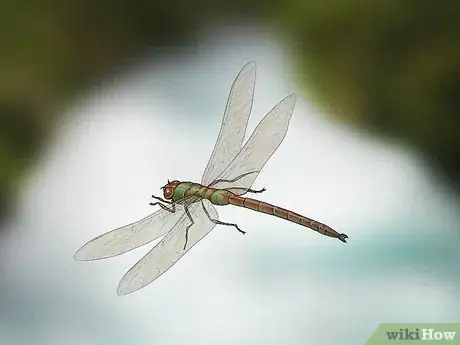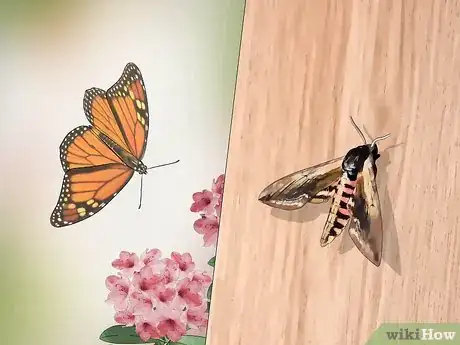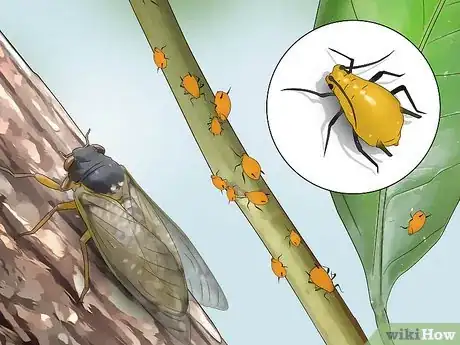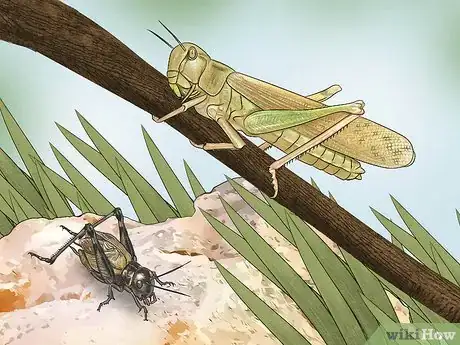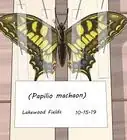This article was co-authored by Joshua Bloom and by wikiHow staff writer, Kira Jan. Joshua Bloom is a Pest Control Specialist and the Vice President of Operations of Standard Pest Management, a pest control company based in New York City. He has over 20 years of experience in the pest control industry and specializes in commercial and large facility pest control management. Standard Pest Control also specializes in ant, bed bug, cockroach, fly, and rodent control. Joshua is licensed by the NYSDEC (New York State Department of Environmental Conservation) for termite control.
There are 25 references cited in this article, which can be found at the bottom of the page.
This article has been viewed 13,526 times.
What’s that bug flying around your house? Is it dangerous or just a nuisance? Whether you’ve got a pest problem or just want to learn how to tell apart commonly confused insects, we’ve put together a guide on the most common flying insects you’ll see. There are 25 orders of flying insects, and within the largest orders, the bugs can look really different (bees and ants are technically in the same order!).[1] X Research source To make things easier, we’ll first cover how to identify specific insects you’re likely to see around your home or garden. Then we’ll go over a few of the less-common insect orders so you can identify flying insects like a true entomologist.
Steps
House Flies
-
House flies have distinctive wide-set, reddish eyes. Look for insects 6-7mm long with grayish or yellowish abdomens. If you can see one up close, check their thorax (midsection) for 4 black stripes and dark markings on their sides.[2] X Research source
- All flies are part of the order Diptera.[3] X Trustworthy Source The Smithsonian Institution Leading group of museums and research institution funded by the U.S. government Go to source
- While flies don’t bite, they can transmit pathogens by excreting onto human skin or food.
- If you see flying insects at night, it’s unlikely you’re dealing with house flies. House flies tend to be inactive at night.[4] X Research source
- House flies are drawn to manure, human excrement, garbage, and kitchen waste.[5]
X
Expert Source

Pest Control Specialist Expert Interview. 22 April 2020. - Get rid of house flies by maintaining proper sanitation and using fly traps.
Drain Flies
-
Drain flies are between 2-5mm and have moth-like wings. Their bodies are round and fuzzy. However, the easiest way to identify them is to look for flies hanging around stagnant water. While these insects aren’t harmful to humans, they can produce 300 eggs in 48 hours and create nests that block your drains.[6] X Research source
- Check for drain flies by sealing off a drain with duct tape. The flies will try to come to the surface and get stuck.
- Create an apple cider vinegar trap to easily catch drain flies, fruit flies, and fungus gnats.
Fruit Flies
-
Fruit flies are tiny, with red or dark eyes. They’re typically around 2-5mm long. You can really identify fruit flies by their behavior–they’ll hover around fruit and vegetables in your home. These little flies lay their larvae inside fruit, because their larvae feed on yeast from fermenting plants and ripening fruit. In other words, they feed on gross, decaying material![7] X Research source
- Fruit flies can be beige, tan, gray, or black.
- Worldwide, there are over 4,000 species of fruit flies, and they can vary widely in appearance.[8] X Research source
- The best way to get rid of fruit flies is to wash fruits and vegetables and store them in a cool, dry place.
- Throw away or compost overripe fruit and take out your kitchen garbage frequently.[9]
X
Expert Source

Pest Control Specialist Expert Interview. 22 April 2020.
Fungus Gnats
-
Fungus gnats are grayish-black with gray or see-through wings. However, you’ll likely be able to identify them better by their behavior–they like to hover around your houseplants. You might easily confuse fungus gnats with fruit flies, but fungus gnats have a thinner body with longer legs and longer antennae. They are also erratic, slow fliers who tend to spend time walking on soil to take a break from flying.[10] X Research source
- These pesky insects cause damage that looks similar to root rot. If you see lots of yellow leaves on your plants, look out for these insects!
- Avoid overwatering your houseplant soil to prevent fungus gnats.
- Fungus gnats may lay eggs in the drainage holes of your pots. If you suspect an infestation, start covering the drainage holes with synthetic fabric to limit the gnats’ access to the hole.
- Fungus gnats are harmless to humans.
White Flies
-
White flies are easily identifiable because of their white wings. They might have solid white colored wings or black bands on white wings. The three most common species are bandedwinged whiteflies (with stripes on their wings), sweetpotato whiteflies, and greenhouse whiteflies.[11] X Research source
- These common garden pests feed on sap and can transmit disease to your plants.
- They can also infest your plants by producing honeydew, which in turn attracts black mold.
- From above, greenhouse whiteflies look triangular when they land, since they hold their wings flat.
- Sweetpotato whiteflies look like grains of rice when they land, since they hold their wings at a tentlike angle. This species tends to transmit the most viruses to plants.
- To prevent whiteflies, inspect new plants you buy with a magnifying glass and look for tiny larvae. Frequently remove dead and dying plant material.
- To eliminate whiteflies, try chemical pesticides or biological control (bringing in a parasitoid species that will kill the whiteflies) with insects like Encarsia formosa or Eretmocerus eremicus.
Mosquitoes
-
Mosquitoes have long, teardrop-shaped wings and featherlike antennae. They have brown or black stripes. You can spot the stripes on their abdomen, legs, and/or wings. Like flies, they’re part of the order Diptera.[12] X Research source
- Male mosquitoes eat a variety of plant-based food including sap, nectar, and fruit while female mosquitoes seek out blood.
- Prevent mosquitoes by removing standing water outside, using screens on windows and doors, and using insect repellent.[13] X Trustworthy Source Centers for Disease Control and Prevention Main public health institute for the US, run by the Dept. of Health and Human Services Go to source
- Certain species of gnats might look like mosquitoes, but gnats hold themselves parallel to the surface they rest on. In contrast, mosquitoes raise their bodies up with their tails in the air.[14] X Research source
Bees
-
Bees have fuzzy bodies with gold and black markings. They’re part of the order Hymenoptera (which also contains wasps, hornets, and ants). You can distinguish Hymenoptera insects by the thin “waist” between their thorax (midsection) and lower abdomen. Hymenoptera insects also have antennae that are usually longer than their heads![15] X Trustworthy Source University of California Division of Agriculture and Natural Resources Extension program of the University of California system devoted to educating and improving local communities Go to source
- If you’re stung by a bee, the bee will imbed the stinger in your skin and it will die.[16] X Research source
- Bees live in hives made of wax (honeycomb).
- There are almost 20,000 known varieties of bees.
- Bees are beneficial to humans and the ecosystem since they’re excellent pollinators. If you have a bee problem, contact a professional to safely remove them.
Hornets
-
Hornets can have red, yellow, and orange markings. They’re larger and fatter than wasps and can grow up to 2.15 inches (5.5 cm)! Hornets can sting repeatedly since they won’t die after they sting. Fortunately, they usually won’t sting unless provoked.[17] X Research source
- If you see a hornet with black and white markings, it might be a bald-faced hornet (also called a paper wasp).[18] X Research source
- Hornets build basketball-sized nests made from chewed-up wood pulp with a paperlike texture. It’s best to let a professional remove these nests.
- Hornet stings are more painful than bee or wasp stings because they contain venom.
Wasps
-
Wasps have distinct yellow and black rings. Like hornets, they have a narrow abdomen and waist. However, wasp markings are brighter and more distinct than the muted colors of hornet markings.[19] X Research source
- Like hornets, wasps can sting multiple times.
- Wasp nests are also made from chewed-up wood pulp.
- Wasps are about ⅓ in. (.8 cm) to 1 in. (2.5 cm) long.[20] X Research source
Beetles/Weevils
-
Beetles have hardened wings that meet in a straight line down their backs. They’re part of the insect order Coleoptera. Beetles have mandibulate mouthparts, meaning you’ll be able to see prominent jaw parts they use to chew their food.[21] X Research source
- Some common species of beetles like the ground beetle and longhorned beetle are nocturnal.[22] X Research source
- There are over 23,700 types of beetles and Coleoptera is the largest order of insects present in the U.S.[23] X Trustworthy Source The Smithsonian Institution Leading group of museums and research institution funded by the U.S. government Go to source
Dragonflies and Damselflies
-
These insects have large eyes, narrow antennae, and transparent wings. They’re part of the Odonata order. Both dragonflies and damselflies have a notch in the center of each wing, called a nodus. However, in dragonflies, the rear wing is broader than the front one. Damselfly front and back wings are of a similar size.[24] X Research source
- Dragonflies are faster than damselflies due to their asymmetrical wing design.
Butterflies and Moths
-
Butterflies and moths have long bodies, broad wings, and often come in bright colors. These insects belong to the order Lepidoptera, which has over 160,000 different species, with the majority being moths.[25] X Research source Wondering how to tell the difference between butterflies and moths? Butterflies have club shaped antennae whereas moths have saw-edged or feathery-looking antennae.[26] X Trustworthy Source Library of Congress Official library of the U.S. and main research institution for Congress and the American public Go to source
- Moths are typically nocturnal.
- It’s a common misconception that touching a butterfly’s wings will make it unable to fly. The powder that comes off is actually made up of tiny scales.
- The butterfly will shed those scales periodically throughout its lifetime.
Lacewings
-
Lacewings have delicate veined wings, big eyes, and cylindrical bodies. Specifically, look out for four membranous wings. The front and back wings might be the same size, but some species might have larger back wings. Lacewings are part of the order Neuropterida.[27] X Research source
- Neuropterida species will hold their wings like a tent behind their body.[28] X Research source
Cicadas, True Hoppers, and Aphids
-
Identify these insects by their leathery exteriors and beaklike mouthparts. Even though they look different, cicadas, hoppers, and aphids are part of the broad order Hemiptera. Most insects in the order Hemiptera will look dorsoventrally flattened (meaning, they look relatively squished and flat when you view them from the side).[29] X Research source
- Cicadas have membranous wings whereas true hoppers have leathery wings.
- Aphids fall into a suborder of plant parasite insects called Sternorrhyncha.
Grasshoppers and Crickets
-
Check for thickened front wings and huge hind legs. Grasshoppers, crickets, and katydids (members of the order Orthoptera) are built for jumping. Their tarsi (or legs) are segmented into 3-4 parts.[30] X Research source
- Crickets have long antennae while grasshoppers have short antennae.[31] X Research source
- Crickets “sing” by rubbing their wings together. Grasshoppers “sing” by rubbing their hind legs against their wings.
You Might Also Like
 How to Feed and Care for a Ladybug
How to Feed and Care for a Ladybug
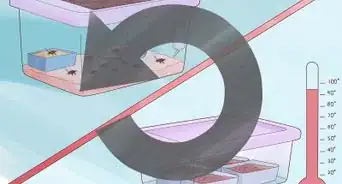
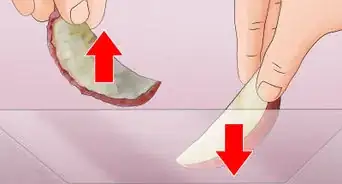
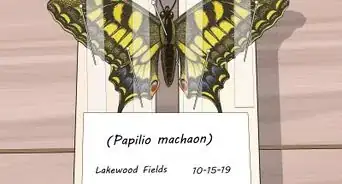


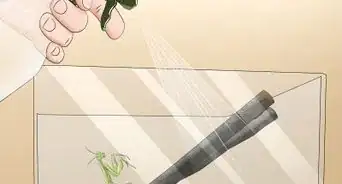

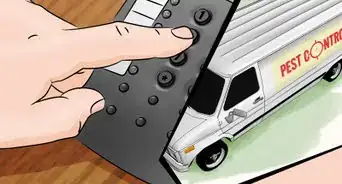


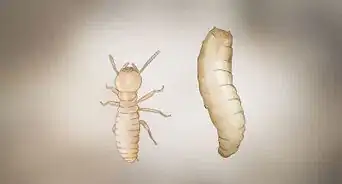

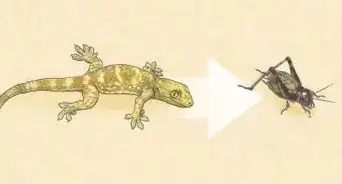
References
- ↑ https://bugguide.net/node/view/222292
- ↑ https://entnemdept.ufl.edu/creatures/urban/flies/house_fly.htm
- ↑ https://www.si.edu/spotlight/buginfo/bugnos
- ↑ https://entnemdept.ufl.edu/creatures/urban/flies/house_fly.htm
- ↑ Joshua Bloom. Pest Control Specialist. Expert Interview. 22 April 2020.
- ↑ https://www.thisoldhouse.com/pest-control/21339927/how-to-get-rid-of-drain-flies
- ↑ https://nysipm.cornell.edu/whats-bugging-you/flies-non-biting/fruit-flies/
- ↑ https://www.planthealthaustralia.com.au/wp-content/uploads/2018/10/The-Australian-Handbook-for-the-Identification-of-Fruit-Flies-v3.1.pdf
- ↑ Joshua Bloom. Pest Control Specialist. Expert Interview. 22 April 2020.
- ↑ https://www.almanac.com/pest/fungus-gnats
- ↑ https://entomology.ca.uky.edu/ef456
- ↑ https://www.nmhealth.org/publication/view/guide/986/
- ↑ https://www.cdc.gov/mosquitoes/mosquito-bites/prevent-mosquito-bites.html
- ↑ https://www.nmhealth.org/publication/view/guide/986/
- ↑ https://ucanr.edu/sites/insectconnect/Identification_information/Identify_to_Order/
- ↑ https://www.bbc.co.uk/newsround/45194754
- ↑ https://www.bbc.co.uk/newsround/45194754
- ↑ https://www.almanac.com/wasps-bees-and-hornets-whats-difference
- ↑ https://www.bbc.co.uk/newsround/45194754
- ↑ https://www.gov.mb.ca/housing/pubs/pests/bees.pdf
- ↑ https://genent.cals.ncsu.edu/insect-identification/order-coleoptera/
- ↑ https://genent.cals.ncsu.edu/insect-identification/order-coleoptera/family-cerambycidae/
- ↑ https://www.si.edu/spotlight/buginfo/bugnos
- ↑ https://ucmp.berkeley.edu/arthropoda/uniramia/odonatoida.html
- ↑ https://www.amentsoc.org/insects/fact-files/orders/lepidoptera.html
- ↑ https://www.loc.gov/everyday-mysteries/zoology/item/how-can-you-tell-the-difference-between-a-butterfly-and-a-moth/
- ↑ https://bugguide.net/node/view/61
- ↑ https://www.ento.csiro.au/education/insects/neuroptera.html
- ↑ https://bugguide.net/node/view/63
- ↑ https://genent.cals.ncsu.edu/insect-identification/order-orthoptera/
- ↑ https://www.amentsoc.org/insects/fact-files/orders/orthoptera.html
About This Article

